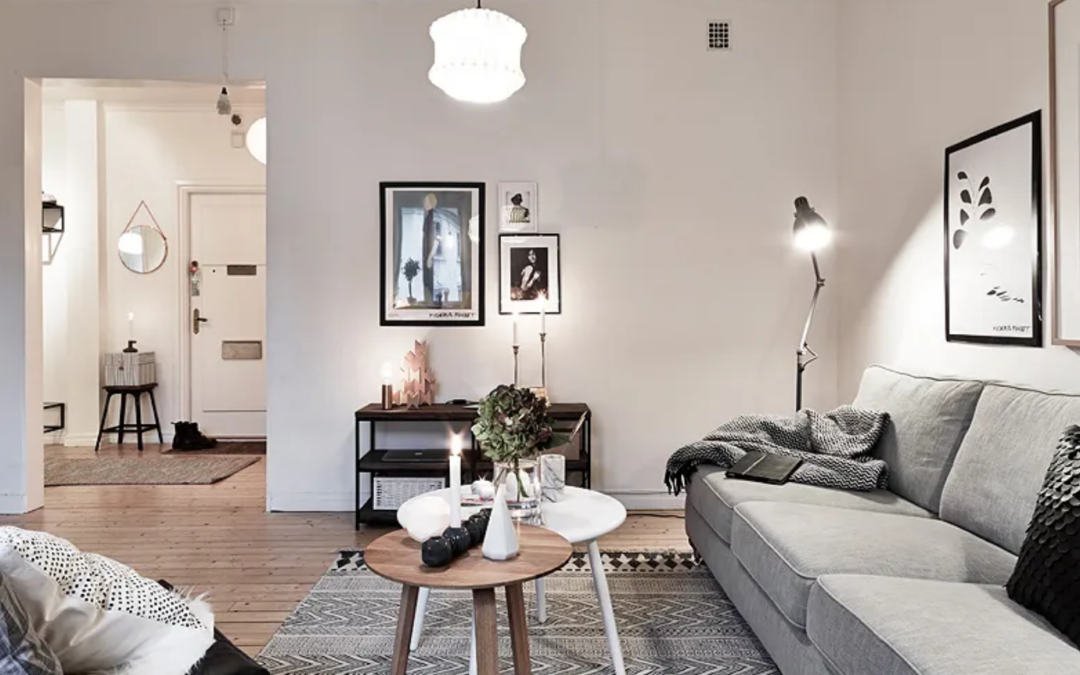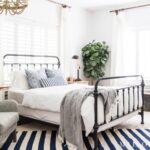| Getting your Trinity Audio player ready... |
Seasonal affective disorder (SAD) can affect anyone, even people who have never had it before, at any moment. SAD is a type of depression linked to seasonal variations, according to the Mayo Clinic. It usually starts in the fall and lasts until the spring.
If you’re feeling gloomy, grumpy, or just out of sorts now that the days are becoming colder and shorter, try some of these simple home improvements and lifestyle modifications to help you get out of that seasonal funk.
Cut the Clutter
Clutter in your home can affect your mental – and even physical – health at any time of year, but when you are in your home more, which we all tend to be when the weather outside is chillier, it’s much harder to ignore, and can quickly make you feel eve worse than the lack of sunny weather does.
It’s not just professional organizers like myself who say this though, there is lots of science to back up our assertion that a cluttered home is bad for your health:
Research shows disorganization and clutter have a cumulative effect on our brains.
Our brains like order, and constant visual reminders of disorganization drain our cognitive resources, reducing our ability to focus.
The visual distraction of clutter increases cognitive overload and can reduce our working memory.
Neuroscience researchers using fMRI (functional magnetic resonance imaging) and other physiological measurements found clearing clutter from the home and work environment resulted in a better ability to focus and process information, as well as increased productivity.
More research found the levels of the stress hormone cortisol were higher in mothers whose home environment was cluttered.
It also found that a chronically cluttered home environment can lead to a constant low-grade fight or flight response, taxing our resources designed for survival. This response can trigger physical and psychological changes that affect how we fight bugs and digest food, as well as leaving us at greater risk of type 2 diabetes and heart disease.
Worse still, perhaps, sleep scientists have determined that people who sleep in cluttered rooms are more likely to have sleep problems, including difficulty falling asleep and being disturbed during the night.
The answer to all of this? A concerted decluttering effort.
However, such projects can be hard to start, and harder to finish. Working with a professional organizer can help a lot though, either in person, so that they can take on some of the physical work too (which in itself can be very overwhelming) or virtually, so that you can complete decluttering projects in your own time but with the wise guidance – and cheerleading – you need to see such projects through to the end.
Try Light Therapy
Light therapy, also known as phototherapy, entails being exposed to strong light for a short period of time each day, ideally within the first hour of waking up. According to the Mayo Clinic, “light therapy mimics natural outdoor light and appears to trigger a change in brain chemicals associated to mood.” Light treatment has been shown to be beneficial in treating the symptoms of SAD in the majority of people, according to research.
The treatment entails daily exposure to a set intensity of light emitted by a light box placed at a certain distance from you. The Mayo Clinic recommends that you educate yourself with the various features and options available before purchasing a light box and consult with a doctor to determine which light box is appropriate for your requirements. If you don’t have time for that, trying Amazon’s top-rated choice won’t do any harm, especially as it’s very reasonably priced.
Create a More Relaxing Sleeping Environment
Taking care of oneself, which includes getting plenty of quality sleep, is essential in the fight against seasonal affective disorder. If you’re having difficulties sleeping, try sticking to a regular sleep schedule and making sure your sleeping environment is comfortable and at a good temperature – experts say the ideal temperature for sleeping is around 65F, but you should stick to what works for you. Look into getting room-darkening drapes to block out any street light, as well as warm, cozy bedding and aromatherapy candles or diffusers to help you sleep.
Make the Time – and Space – to Exercise and Eat Well.
Always remember to exercise and eat healthy throughout the year. According to the Mayo Clinic, good eating habits can help decrease stress and anxiety, both of which can exacerbate SAD symptoms. Furthermore, staying fit can improve your happiness and self-esteem.
Stock your cupboard and refrigerator with nutritious, conveniently available meals so you won’t be tempted to reach for unhealthy comfort foods and snacks. Setting up a distinct exercise area in your home, whether in the basement, a guest room, or even outside, depending on the weather, is also a good idea, as it will help you stick to your exercise plans and stop you from accidentally breaking any of your stuff – including your bones – by trying to work out in your bedroom or living room.
Make Every Room Brighter
Allow as much natural light into your home as possible during the day. Open the blinds and drapes, and move your workstation or sitting area closer to a window to make better use of the natural light. Tree branches that block light should be pruned, and skytubes can be considered to lighten a dark room in your home.
Make Year-Round Use of Outdoor Spaces
According to the American Psychiatric Association, “greater exposure to sunlight can help relieve symptoms of SAD in some patients.” To get some fresh air and sunlight, go for a walk during your lunch break. If you can’t get outside for long periods of time, try shorter, 5- to 10-minute sessions to absorb some vitamin D. If the weather is nice, take advantage of your patio furniture this winter and sit outside for a few minutes.
Pick up a Paint Roller
Because color has an effect on your mood, painting a room is a simple home improvement that can help with seasonal affective disorder. Reds promote confidence, excitement, and vitality, whereas yellows promote pleasure and optimism. Greens can be soothing, while oranges can be energizing. For a more in depth look at colors and moods check out my guide here.
Indulge in Some Hygge
Hygge is a Danish cultural trait that emphasizes coziness and comfort. Embracing features of hygge at home can assist when you’re locked inside during the winter months and feeling a little blue. Light a scented candle, take a hot bath, or curl up with a good book in a cozy corner of your home. Want to create a real hygge space? I’ve covered doing that extensively here.
Need help adding light, warmth and cheer to your winter home decor? Just Organized by Taya is ready, willing and available! Book a Zoom consultation here and let’s talk about just how we can help you.
- The 30-Minute Fall Reset: A Strategic Habit to OrganizeYour Busy Season - October 2, 2025
- The Ultimate Guide to Organizing and Storing Pet Food (Without Sacrificing Your Home Style) - September 30, 2025
- 25+ Things You MUST Declutter When Selling Your Houston Home - September 25, 2025












